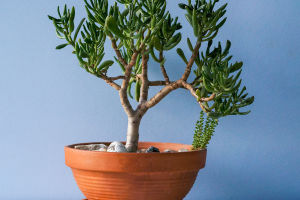Growing flowers at home brings joy and fulfillment to many people's lives.
However, amidst the excitement of nurturing plants, one crucial aspect often gets overlooked - proper watering techniques.
Watering plays a pivotal role in maintaining healthy plant growth. Employing the correct watering method ensures that plants receive the optimal amount of water, preventing both under and overwatering.
This comprehensive guide will explore various common plants found in home gardens and the essential watering techniques needed to ensure their vitality.
1. Understanding the Water Requirements of Plants
Each plant species has distinct water needs. Therefore, it's imperative to grasp the specific water requirements of the plants you cultivate. Generally, most plants necessitate more water during their growth phase and less during dormancy.
For instance, tropical plants typically demand higher water levels, while succulents thrive on minimal water. Understanding your plant's growth patterns and water needs enables you to devise a precise watering schedule.
2. Observing Soil Moisture Levels
Monitoring soil moisture levels is a fundamental method for determining when plants require watering. Typically, when the soil surface feels dry to the touch, it signifies the need for watering.
However, not all plants mandate waiting until the soil is completely dry. Some species, especially those with higher humidity requirements, should be watered when the soil surface begins to dry out.
3. Choosing the Appropriate Watering Method
Selecting the appropriate watering method is equally crucial. Common techniques include top watering and bottom watering. Top watering involves pouring water directly onto the plant's soil surface, suitable for most indoor plants.
Conversely, bottom watering entails placing the plant's pot in a container filled with water, allowing the plant to absorb water autonomously. This method is ideal for moisture-sensitive plants like ferns and certain succulents.
4. Avoiding Overwatering
Overwatering is a prevalent mistake among home gardeners. Excessive watering can lead to waterlogged soil, suffocating roots, and fostering the growth of mold and bacteria, thereby hindering plant growth.
Hence, it's essential to regulate water quantities to prevent overwatering. If uncertain, test the soil's moisture level with your hands before deciding to water.
5. Timing Watering Sessions
Timing watering sessions are pivotal for optimal plant growth. Generally, early morning or late evening is the best time for watering. During these periods, temperatures are lower, and water evaporation rates are reduced, facilitating efficient water absorption by plants.
Conversely, watering during midday when the sun is intense can cause rapid water evaporation, diminishing watering effectiveness.
6. Implementing Regular Fertilization
In addition to timely watering, regular fertilization is paramount for sustaining healthy plant growth. Fertilizers supply plants with essential nutrients vital for growth and flowering. Ideally, plants should be fertilized periodically, albeit with caution to prevent over-fertilization and subsequent harm to plants.
In conclusion, mastering proper watering techniques is imperative for successful home flower cultivation.
By understanding plant water requirements, monitoring soil moisture, selecting suitable watering methods, avoiding overwatering, timing watering sessions appropriately, and implementing regular fertilization, you can nurture robust and vibrant plants in your home garden.
May this guide serve as a valuable resource, aiding you in cultivating flourishing flowers and enhancing your gardening experience.


